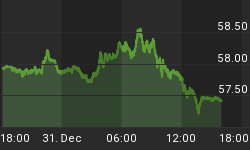7/12/2010 9:10:54 AM
Five percent for the week...
Trade Recommendations:
Take no action.
Daily Trend Indications:

- Positions indicated as Green are Long positions and those indicated as Red are short positions.
- The State of the Market is used to determine how you should trade. A trending market can ignore support and resistance levels and maintain its direction longer than most traders think it will.
- The BIAS is used to determine how aggressive or defensive you should be with a position. If the BIAS is Bullish but the market is in a Trading state, you might enter a short trade to take advantage of a reversal off of resistance. The BIAS tells you to exit that trade on "weaker" signals than you might otherwise trade on as the market is predisposed to move in the direction of BIAS.
- At Risk is generally neutral represented by "-". When it is "Bullish" or "Bearish" it warns of a potential change in the BIAS.
- The Moving Averages are noted as they are important signposts used by the Chartists community in determining the relative health of the markets.
Current ETF positions are:
Long DIA @ $97.00
Long QQQQ @ $42.50
Long SPY @ $102.35
Daily Trading Action
The major index ETFs opened slightly lower and caught a modest bid from there only to see prices fade fifteen minutes later. The bears lost control in the next fifteen minutes after push the major indexes back into negative territory and the markets continued higher until around an hour into the session when the bears applied pressure to push the markets a bit lower but the bulls kept the major indexes in positive territory and trading sideways until a surge in the final hour and a half saw the major indexes tack on at least five percent gains for the week. The Russell-2000 (IWM 62.94 +0.96), which started the week by moving lower, gained 1.5% on the day. The Semiconductor Index (SOX 351.36 +3.74) joined in the rally as well. The Bank Index (KBE 24.50 +0.56) gained more than two percent and rising above its 20-Day Moving Average (DMA) and its 200-DMA. Similarly, the Regional Bank Index (KRE 24.27 +0.52) tacked on two percent closing above its 20-DMA and 200-DMA. The 20+ Yr Bonds (TLT 99.22 -0.57) fell another half percent moving inverse to equities. Volume was incredibly light with just 874M shares traded on the NYSE and with 1.579B shares traded on the NASDAQ.
There was a single economic report of interest released:
- Wholesale Inventories (May) rose 0.5% versus an expected rise of 0.4%
The report was released a half hour into the session and helped the market rise as a lack of bad news was considered to be good news going into earnings season with major companies beginning to report earnings next week.
For you old timers, there was a movie called Saturday Night Fever made in the 1977. It starred John Travolta early in his film career after having a successful run in a TV series called Welcome Back Cotter. Travolta played a young man who had a focus on dance at the clubs on Saturday night. It was the era of disco when Donna Summer was the ruling Queen of disco. Another group or brothers had a string of hits during the era. The Brothers Gibb shortened their name to the Bee Gees and recorded the song "Staying Alive" for John's great dance act from the movie. Just like the song, market participants kept the rally alive as the bulls got busy strutting their stuff late in the session.
All ten economic sectors in the S&P-500 moved higher led by Consumer Discretionary (+1.0%) with Consumer Staples close to unchanged.
Implied Volatility dropped for the sixth day with the S&P-500 (VIX 24.98 -0.73) implied volatility falling three percent and the implied volatility for the NASDAQ-100 (VXN 25.99 -1.06) falling nearly four percent.
Commentary:
Friday's trading action was on extremely light volume. Market participants are anticipating earnings season which unofficially starts with the release of earnings by Alcoa (AA 10.94 +0.22). Other big name companies that will report include Intel (INTC), General Electric (GE), and Google (GOOG). Probably the biggest ones to watch however are the large banks, with Bank of America (BAC), Citigroup (C), and JP Morgan Chase (JPM) set to report late in the coming week. Why are the big banks so important? Note that it is the Bank Index (KBE) and Regional Bank Index (KRE) that have been leading the market higher. While financials are a key sector in the major indexes, they aren't usually a market leader. Both logged disproportionate gains on Friday as investors and traders attempt to position in them prior to earnings being reported. Clearly, there is a fair amount of bullish optimism in anticipation.
We continue to monitor the 200-DMAs for the major indexes, along with the closing levels:
| Index | 200-DMA | Close |
| Dow | 10,360 | 10,198.03 |
| S&P-500 | 1,112 | 1,077.96 |
| NASDAQ-100 | 1,839 | 1,814.79 |
What will happen on Monday? Equities haven't yet provided a signal as to future direction. Light volume trading can lead to a lot of volatility but can be meaningless in anticipating a more significant market move. For now, we will remain long and try to discern the most likely direction the market will take in the near future.
We hope you have enjoyed this edition of the McMillan portfolio. You may send comments to mark@stockbarometer.com.
















